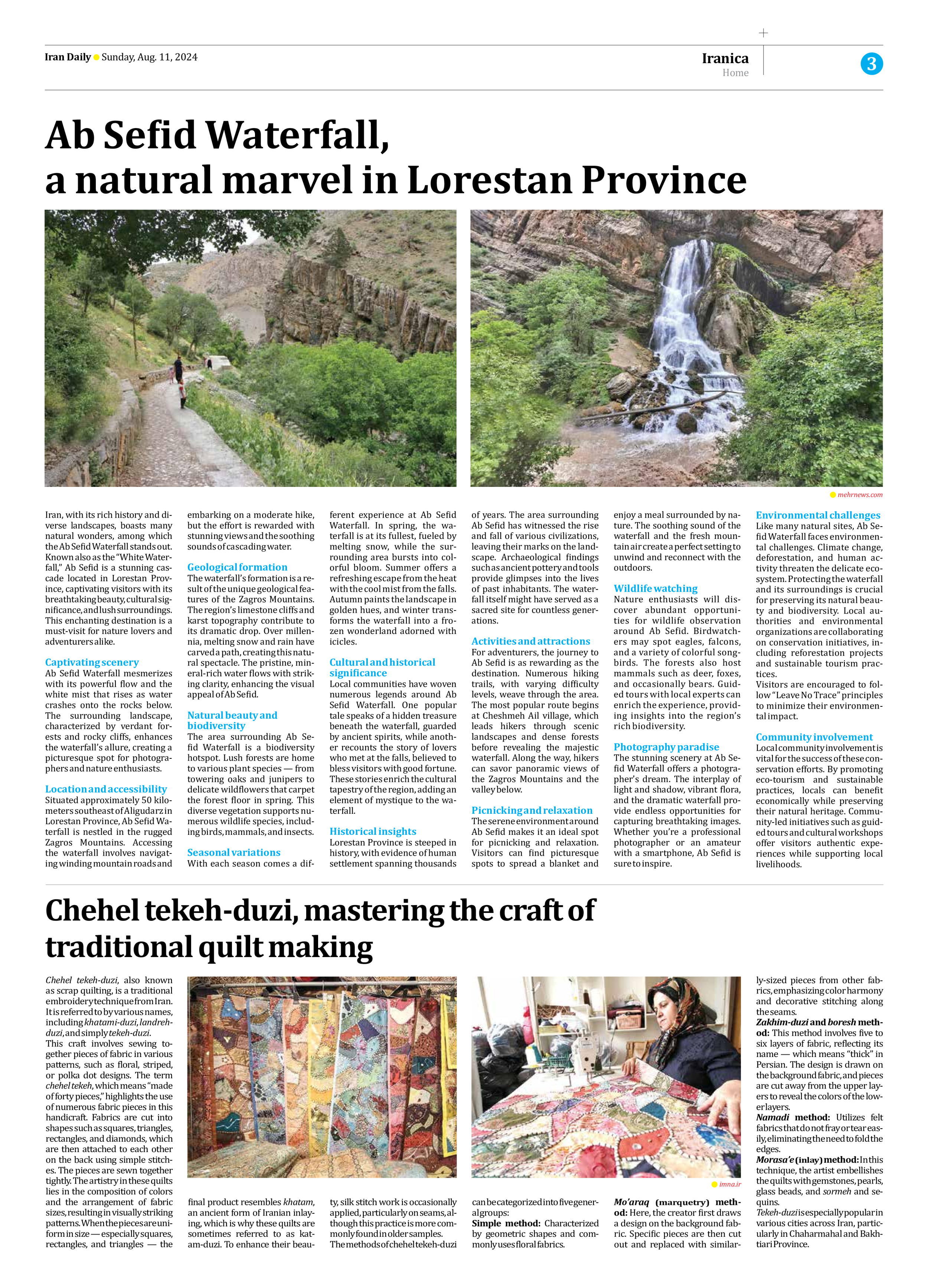
Copy in clipboard...
Chehel tekeh-duzi, mastering the craft of traditional quilt making
This craft involves sewing together pieces of fabric in various patterns, such as floral, striped, or polka dot designs. The term chehel tekeh, which means “made of forty pieces,” highlights the use of numerous fabric pieces in this handicraft. Fabrics are cut into shapes such as squares, triangles, rectangles, and diamonds, which are then attached to each other on the back using simple stitches. The pieces are sewn together tightly. The artistry in these quilts lies in the composition of colors and the arrangement of fabric sizes, resulting in visually striking patterns. When the pieces are uniform in size — especially squares, rectangles, and triangles — the final product resembles khatam, an ancient form of Iranian inlaying, which is why these quilts are sometimes referred to as katam-duzi. To enhance their beauty, silk stitch work is occasionally applied, particularly on seams, although this practice is more commonly found in older samples.
The methods of chehel tekeh-duzi can be categorized into five general groups:
Simple method: Characterized by geometric shapes and commonly uses floral fabrics.
Mo’araq (marquetry) method: Here, the creator first draws a design on the background fabric. Specific pieces are then cut out and replaced with similarly-sized pieces from other fabrics, emphasizing color harmony and decorative stitching along the seams.
Zakhim-duzi and boresh method: This method involves five to six layers of fabric, reflecting its name — which means “thick” in Persian. The design is drawn on the background fabric, and pieces are cut away from the upper layers to reveal the colors of the lower layers.
Namadi method: Utilizes felt fabrics that do not fray or tear easily, eliminating the need to fold the edges.
Morasa’e (inlay) method: In this technique, the artist embellishes the quilts with gemstones, pearls, glass beads, and sormeh and sequins.
Tekeh-duzi is especially popular in various cities across Iran, particularly in Chaharmahal and Bakhtiari Province.







